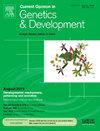探索发育的起源:全能干细胞
IF 3.6
2区 生物学
Q2 CELL BIOLOGY
引用次数: 0
摘要
作为发育的起点,受精卵具有生成全新生物体的能力,包括胚胎组织和胚胎外组织,代表着最高的发育潜能,即全能性。40多年来,多能干细胞的分化潜力弱于全能细胞,很容易从内部细胞群中获得并在体外维持。到目前为止,获取全能干细胞仍然具有挑战性。最近,利用剪接体抑制首次实现了小鼠和人的全能卵裂球样细胞的稳定培养。随后,其他方法,特别是表观遗传操作,也成功地培养了小鼠全能干细胞。这些进展为研究早期胚胎发育提供了一个很好的系统,并为再生医学提供了新的可能性。然而,全能干细胞的体外培养只是最近才实现的,这一领域还需要进一步的探索。本文旨在比较不同的全能干细胞,并讨论它们在再生医学和疾病建模方面的潜在应用。本文章由计算机程序翻译,如有差异,请以英文原文为准。
Exploring the origin of the development: totipotent stem cells
As the origin of the development, a fertilized egg owns the ability to generate a whole new organism, including both embryonic and extraembryonic tissues, representing the highest developmental potency, totipotency. For more than 40 years, pluripotent stem cells, with differentiation potential weaker than that of totipotent cells, have been easily derived from inner cell mass and maintained in vitro. Until now, capturing totipotent stem cells is still challenging. Recently, the stable culture of mouse and human totipotent blastomere–like cells was achieved for the first time using spliceosomal repression. Subsequently, other methods, particularly epigenetic manipulation, have also succeeded in culturing mouse totipotent stem cells. These advancements provide an excellent system for studying early embryonic development and offer new possibilities for regenerative medicine. However, the in vitro culture of totipotent stem cells has only been recently realized, and much further exploration is needed in this field. This review aims to compare different totipotent stem cells and discuss their potential applications in regenerative medicine and disease modeling.
求助全文
通过发布文献求助,成功后即可免费获取论文全文。
去求助
来源期刊
CiteScore
7.90
自引率
0.00%
发文量
102
审稿时长
1 months
期刊介绍:
Current Opinion in Genetics and Development aims to stimulate scientifically grounded, interdisciplinary, multi-scale debate and exchange of ideas. It contains polished, concise and timely reviews and opinions, with particular emphasis on those articles published in the past two years. In addition to describing recent trends, the authors are encouraged to give their subjective opinion of the topics discussed.
In Current Opinion in Genetics and Development we help the reader by providing in a systematic manner:
1. The views of experts on current advances in their field in a clear and readable form.
2. Evaluations of the most interesting papers, annotated by experts, from the great wealth of original publications.[...]
The subject of Genetics and Development is divided into six themed sections, each of which is reviewed once a year:
• Cancer Genomics
• Genome Architecture and Expression
• Molecular and genetic basis of disease
• Developmental mechanisms, patterning and evolution
• Cell reprogramming, regeneration and repair
• Genetics of Human Origin / Evolutionary genetics (alternate years)

 求助内容:
求助内容: 应助结果提醒方式:
应助结果提醒方式:


